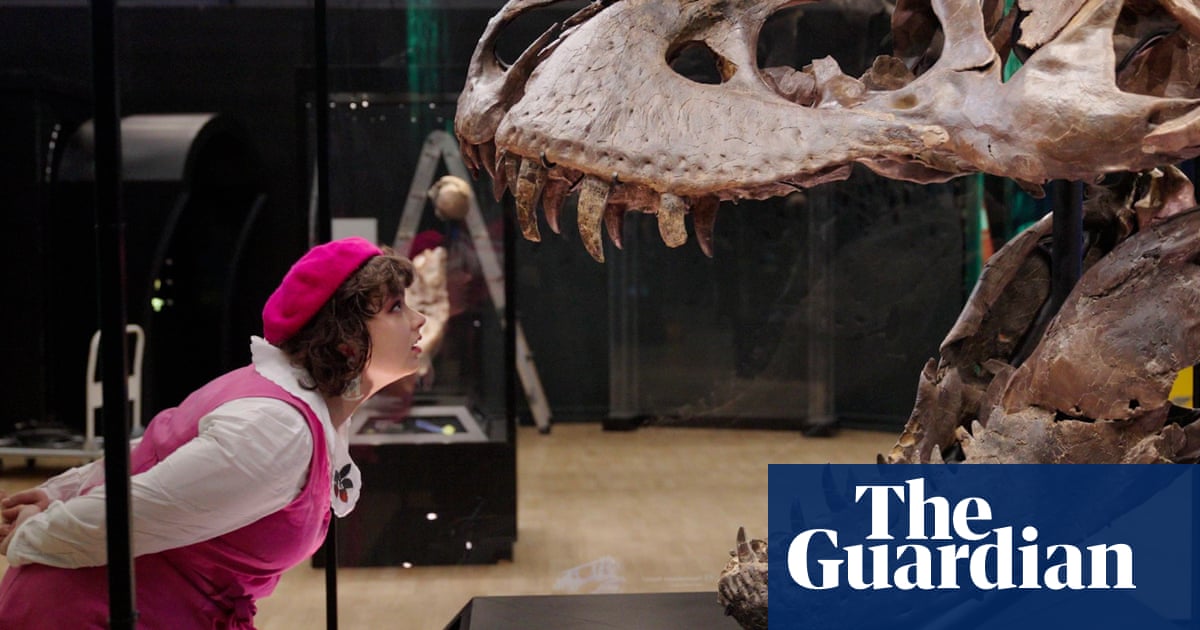When the crates containing the fossilised bones of Victoria the T rex arrived at Melbourne Museum, one of Australia’s leading palaeontologists was giddy with excitement – and trepidation.
“It’s the closest I’ve ever got to the skull of a T rex,” Dr Erich Fitzgerald says.
“It’s all at once the thing of dreams for a lifelong dinosaur nut and it’s also simply terrifying.”
Victoria, named after the Canadian city, is 66m years old and one of the most complete and well preserved Tyrannosaurus rex fossils on the planet.
The 199 bones – including the massive, near-perfect skull – make up more than half of the animal’s original skeleton.
“We rarely have more than about 10 to 15%,” Fitzgerald says.
“So to have anywhere between 50 to 70% of the skeleton consisting of the original fossil bones is extraordinary.”
However, the skull that will adorn the 12 metre long skeleton will be a recreation, with the actual 139kg fossil to go on display in a seperate showcase.
Fitzgerald was faced with the assiduous task of bringing the dinosaur back to life, bone by bone.
“The bones of the skull of Victoria are both very heavy and very fragile. So … putting [it] almost four metres up in the air, sitting on some steel braces, there are some risks involved,” Fitzgerald says.
“But also by having the real fossil bones lower down … is in some ways an even more exciting experience. Because you get to get this close to a skull the size of a refrigerator. And that’s something we generally don’t get to do in our everyday lives.”
Victoria was discovered in 2013 in South Dakota, but it took years of “painstaking work” to extract the bones from the rock, ensure they were structurally sound and determine which bones are which.
“Sometimes you’ll have a big bit or a small bit of a bone that you know must belong somewhere in the skeleton [and] you’ve got to work out where that jigsaw puzzle piece goes,” Fitzgerald says.
Getting the priceless bones of Victoria to Melbourne was no easy feat either, having arrived at the Melbourne Museum in no fewer than 14 custom foam moulded and highly cushioned crates.
“There’s always going to be a little bit of thinking as you open up that box after it’s travelled thousands of kilometres, ‘Oh how’s it gone this time’,” Fitzgerald said, grimacing at the memory.
After being forklifted into the exhibit hall, the bones were then painstakingly unpacked by the museum’s palaeontologists and conservators.
The skeleton build alone took a team of four people a week to construct, using scissor lifts to reassemble the fossil jigsaw and attach it to the 40 foot steel armature.
“The bones of Victoria are maintained … in climate control situations, and especially with control of humanity in mind,” Fitzgerald said.
“So Victoria’s bones are getting very much royal treatment appropriate to the king or queen of dinosaurs.”

